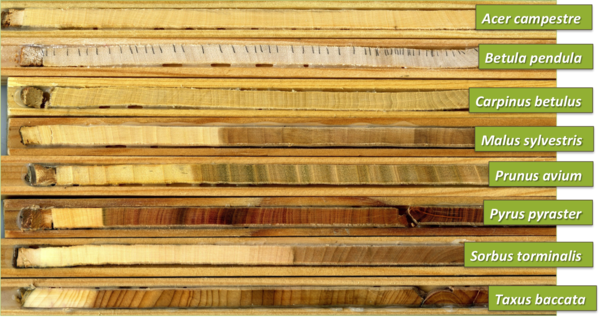Carbon isotopes elucidate drought stress in rare native tree species in NE-Germany
2 Eberswalde University for Sustainable Development (HNEE) c/o Botanical Garden, Am Zainhammer 5, D-16225 Eberswalde, Germany
3 University of Bayreuth, Ecological Botanical Garden, Universitätsstr. 30, D-95447 Bayreuth, Germany
P 2.2 in Stable isotopes in environmental research - bridging disciplines, organisms and processes
Introduction
Climate projections predict higher temperatures and less precipitation during the growing season and generally more frequent extreme events for NE-Germany. Monodominant forest stands have shown to be extremely vulnerable to climate change. The aim of our study is to identify suitable tree species to increase the biodiversity in NE-German forests under a changing climate.
Material and Methods
We assess the sensitivity of rare native tree species to extreme/prolonged summer drought. These rare and secondary, less studied species include Taxus baccata, Betula pendula, Carpinus betulus, Prunus avium, Acer campestre, Malus sylvestris, Pyrus pyraster and Sorbus torminalis. We extracted increment cores for dendrochronology and carbon stable isotope analysis from several individuals of these rare tree species in forest plots in NE-Germany.
Results
It was possible to identify distinct negative pointer years (tree rings with increment below average) common for most of the tree species in this study (1976, 1989, 1992, 2003, 2006, 2013) by dendrochronological analysis of the increment cores. Several further years in which tree species experienced drought stress during the growing season could be identified by carbon stable isotope natural abundance analysis and are used to determine the tree species' intensity of the drought response.
Conclusions
The results of this study can be employed to shape silvicultural decision-making in forest management to increase tree species richness and forest biodiversity to secure forest function in a changing climate.



